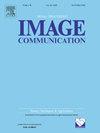Data-driven gradient priors integrated into blind image deblurring
IF 2.7
3区 工程技术
Q2 ENGINEERING, ELECTRICAL & ELECTRONIC
引用次数: 0
Abstract
Blind image deblurring is a severely ill-posed task. Most existing methods focus on deep learning to learn massive data features while ignoring the vital significance of classic image structure priors. We make extensive use of the image gradient information in a data-driven way. In this paper, we present a Generative Adversarial Network (GAN) architecture based on image structure priors for blind non-uniform image deblurring. Previous image deblurring methods employ Convolutional Neural Networks (CNNs) and non-blind deconvolution algorithms to predict kernel estimations and obtain deblurred images, respectively. We permeate the structure prior of images throughout the design of network architectures and target loss functions. To facilitate network optimization, we propose multi-term target loss functions aimed to supervise the generator to have images with significant structure attributes. In addition, we design a dual-discriminant mechanism for discriminating whether the image edge is clear or not. Not only image content but also the sharpness of image structures need to be discriminated. To learn image gradient features, we develop a dual-flow network that considers both the image and gradient domains to learn image gradient features. Our model directly avoids the accumulated errors caused by two steps of “kernel estimation-non-blind deconvolution”. Extensive experiments on both synthetic datasets and real-world images demonstrate that our model outperforms state-of-the-art methods.
数据驱动的梯度先验集成到盲图像去模糊
盲图像去模糊是一项严重不适定的任务。现有的方法大多侧重于深度学习来学习海量数据特征,而忽略了经典图像结构先验的重要意义。我们以数据驱动的方式广泛利用图像梯度信息。在本文中,我们提出了一种基于图像结构先验的生成对抗网络(GAN)结构,用于盲非均匀图像去模糊。以前的图像去模糊方法分别采用卷积神经网络(cnn)和非盲反卷积算法来预测核估计和获得去模糊图像。我们将图像的结构先验渗透到网络架构和目标损失函数的设计中。为了便于网络优化,我们提出了多项目标损失函数,旨在监督生成器具有重要结构属性的图像。此外,我们设计了一种双判别机制来判别图像边缘是否清晰。不仅要对图像内容进行判别,还要对图像结构的清晰度进行判别。为了学习图像梯度特征,我们开发了一个同时考虑图像和梯度域的双流网络来学习图像梯度特征。该模型直接避免了“核估计-非盲反卷积”两步累积误差。在合成数据集和真实世界图像上进行的大量实验表明,我们的模型优于最先进的方法。
本文章由计算机程序翻译,如有差异,请以英文原文为准。
求助全文
约1分钟内获得全文
求助全文
来源期刊

Signal Processing-Image Communication
工程技术-工程:电子与电气
CiteScore
8.40
自引率
2.90%
发文量
138
审稿时长
5.2 months
期刊介绍:
Signal Processing: Image Communication is an international journal for the development of the theory and practice of image communication. Its primary objectives are the following:
To present a forum for the advancement of theory and practice of image communication.
To stimulate cross-fertilization between areas similar in nature which have traditionally been separated, for example, various aspects of visual communications and information systems.
To contribute to a rapid information exchange between the industrial and academic environments.
The editorial policy and the technical content of the journal are the responsibility of the Editor-in-Chief, the Area Editors and the Advisory Editors. The Journal is self-supporting from subscription income and contains a minimum amount of advertisements. Advertisements are subject to the prior approval of the Editor-in-Chief. The journal welcomes contributions from every country in the world.
Signal Processing: Image Communication publishes articles relating to aspects of the design, implementation and use of image communication systems. The journal features original research work, tutorial and review articles, and accounts of practical developments.
Subjects of interest include image/video coding, 3D video representations and compression, 3D graphics and animation compression, HDTV and 3DTV systems, video adaptation, video over IP, peer-to-peer video networking, interactive visual communication, multi-user video conferencing, wireless video broadcasting and communication, visual surveillance, 2D and 3D image/video quality measures, pre/post processing, video restoration and super-resolution, multi-camera video analysis, motion analysis, content-based image/video indexing and retrieval, face and gesture processing, video synthesis, 2D and 3D image/video acquisition and display technologies, architectures for image/video processing and communication.
 求助内容:
求助内容: 应助结果提醒方式:
应助结果提醒方式:


